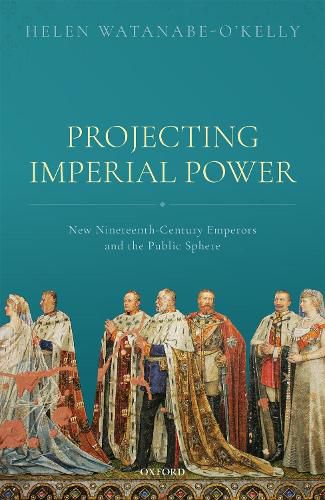Readings Newsletter
Become a Readings Member to make your shopping experience even easier.
Sign in or sign up for free!
You’re not far away from qualifying for FREE standard shipping within Australia
You’ve qualified for FREE standard shipping within Australia
The cart is loading…






The nineteenth century is notable for its newly proclaimed emperors, from Franz I of Austria and Napoleon I in 1804 through Agustin and Pedro, the emperors of Mexico and Brazil in 1822 to Victoria, empress of India in 1876. Monarchs such as Napoleon III, Maximilian of Mexico, and Wilhelm I projected an imperial aura with coronations, courts, medals, costumes, portraits, monuments, international exhibitions, festivals, architecture, and town planning. They relied on ancient history for legitimacy whilst partially espousing modernity. Projecting Imperial Power is the first book to consider newly proclaimed emperors in six territories across three continents across the whole range of the nineteenth century.The first emperors’ successors - Pedro II of Brazil, Franz Joseph of Austria, and Wilhelm II of Germany - expanded their panoply of power, until Pedro was forced to abdicate in 1889 and World War I brought the Austrian and German empires to an end. Britain invented an imperial myth for its Indian empire in the 20th century, until George VI relinquished the title of emperor in 1947. The imperial cities of Berlin, Paris, Vienna, and New Delhi bear witness to vanished empires.Using a wide range of source Projecting Imperial Power explains the imperial ambition behind these imperial cities. It discusses how the empires and their rulers are remembered today by examining how the imperial statues that were erected in huge numbers in the second part of the period are treated today, and how this demonstrates the contested place of emperors in national cultural memory.
$9.00 standard shipping within Australia
FREE standard shipping within Australia for orders over $100.00
Express & International shipping calculated at checkout
The nineteenth century is notable for its newly proclaimed emperors, from Franz I of Austria and Napoleon I in 1804 through Agustin and Pedro, the emperors of Mexico and Brazil in 1822 to Victoria, empress of India in 1876. Monarchs such as Napoleon III, Maximilian of Mexico, and Wilhelm I projected an imperial aura with coronations, courts, medals, costumes, portraits, monuments, international exhibitions, festivals, architecture, and town planning. They relied on ancient history for legitimacy whilst partially espousing modernity. Projecting Imperial Power is the first book to consider newly proclaimed emperors in six territories across three continents across the whole range of the nineteenth century.The first emperors’ successors - Pedro II of Brazil, Franz Joseph of Austria, and Wilhelm II of Germany - expanded their panoply of power, until Pedro was forced to abdicate in 1889 and World War I brought the Austrian and German empires to an end. Britain invented an imperial myth for its Indian empire in the 20th century, until George VI relinquished the title of emperor in 1947. The imperial cities of Berlin, Paris, Vienna, and New Delhi bear witness to vanished empires.Using a wide range of source Projecting Imperial Power explains the imperial ambition behind these imperial cities. It discusses how the empires and their rulers are remembered today by examining how the imperial statues that were erected in huge numbers in the second part of the period are treated today, and how this demonstrates the contested place of emperors in national cultural memory.